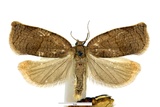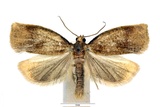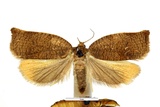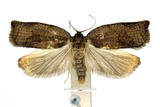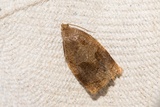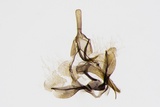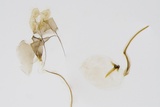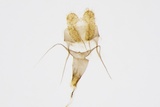Archips rosana (Linnaeus, 1758) Species
Last modified: Nov. 6, 2023, 3:34 p.m.
A not so common species throughout Belgium. It is a pest of fruit trees and other Rosaceae.
Details
- Classification
- Family: Tortricidae > Subfamily: Tortricinae > Tribus: Archipini > Genus: Archips > Species: Archips rosana
- Vernacular names
- Heggenbladroller (NL), Rose Tortrix (EN), Tordeuse européenne (FR), Heckenwickler (DE)
- Synonyms
- Archips ameriana (Linnaeus, 1758) , Archips laevigana (Denis & Schiffermüller, 1775) , Archips oxyacanthana (Hübner, 1799) and Archips acerana (Hübner, 1799)
- First mention in Belgium
- De Sélys-Longchamps E. 1844. Énumération des insectes Lépidoptères de la Belgique. — Mémoires de la Société royale des Sciences de Liége 2: 1–35. On page 20.
- Status
-
Native
Distribution
Caterpillar
Last instar larvae are about 15-20 mm in length. The abdomen is dull pale green to dark olive green with pale pinacula. The head is reddish brown to dark brown. The greenish-brown prothoracic shield is shaded posteriorly with dark brown to black, the degree of shading varies. Thoracic legs are brown to black.
Bionomics
The larva lives first in a bud, later in rolled or spun leaves, but also on the flowers and the buds on the host plant. It hibernates as an egg.
Pupation takes place in a cocoon in the larval habitation.
The moths are active at dusk and later come moderately to light.
Flight periods
The adults fly mainly during June and July, occasionally later.
Observed on
- Substrates:
- Polyphagous
Primary host plants are Malus, Pyrus, Crataegus and Ligustrum. Also fruit and other deciduous trees, occasionally on conifers, Myrica or herbaceous plants are taken.
